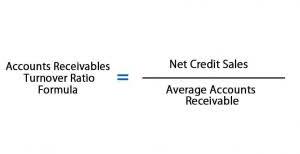
These articles and related content is not a substitute for the guidance of a lawyer (and especially for questions related to GDPR), tax, or compliance professional. When in doubt, please consult your lawyer tax, or compliance professional for counsel. Sage makes no representations or warranties of any kind, express or implied, about the completeness or accuracy of this article and related content.
- The statement reveals how much revenue the programs and activities of the organization produce and utilize.
- Velu’s services address the unique challenges faced by nonprofits and small businesses, fostering sustainable growth.
- Since furthering your mission is critical to your nonprofit’s success, most of your expenses are likely program expenses.
- Each organization’s statement of functional expenses will look slightly different depending on what natural expenses they incur and how resources are allocated.
- Management will allocate these items based on estimates, considering the nature of the expense and how it relates to the functional category.
What Are Functional Expenses? A Guide to Nonprofit Accounting

Most state and federal documents that you will need to file to maintain your 501(c)(3) status will ask that you categorize expenses by function rather than nature. This provides transparency and shows how much of your funding is used on your mission-related activities vs. how much is used for the organization. However, most expenses are allocated across more than one function, either directly or indirectly. Direct allocation would be identifying specific expenditures and classifying them to the appropriate function. Another option is for management to make its best estimate on a percentage basis of how each natural expense is allocated.
FREEFinance & Accounting Risk Assessment
Use the statement to assess spending patterns, improve budgeting, and ensure resources are aligned with your mission. Sort each cost by both function (why it was incurred) and nature (what was purchased) to provide a clear structure. Accurately categorizing these expenses ensures transparency and Interior Design Bookkeeping helps maintain donor confidence. To create your report with the template, list all your natural expense categories in the first column.
Search form
By comparing the report with your predictions from the previous year, you can make more accurate projections when allocating expenses for the coming year. While each of these reports has a direct for-profit parallel—the income statement, balance sheet, and cash flow statement respectively—the statement of functional expenses is unique to nonprofits. Some businesses compile a statement of costs of goods sold, which is somewhat similar in purpose to a nonprofit’s functional expense report. However, the for-profit version typically only includes costs related to production, not management or selling.
- It’s possible these expenses are quite low, especially if the organization is being run by volunteers.
- The Statement of Functional Expenses plays a crucial role in the financial reporting of nonprofit organizations.
- But outside of supplies and materials, many nonprofit expenses don’t fit neatly into one functional classification.
- This provides transparency and shows how much of your funding is used on your mission-related activities vs. how much is used for the organization.
- Expenses that are directly related to specific gross revenues may be displayed sequentially with the related revenues.
- You can improve decision-making by reviewing the data in your non-profit accounting software and comparing it to previous years when creating your annual operating budget.
What is a nonprofit statement of functional expenses and why does it matter?

The document should include the determined disclosure method, as well as approved classifications of functions. Use the document to communicate with accounting personnel, organization leaders, auditors, and other users of the financial statements. As mentioned above, functional expenses are essentially an allocation of expenses by purpose.


The classification of management and general is reserved for expenses that are related to the overall operations of the organization. Expenses commonly categorized as management and general include salaries, insurance, staff meetings, accounting and professional services, and other administrative expenses. The methodology used for allocating expenses across functions should be disclosed in statement of functional expenses the notes to your financial statements. Are you struggling with tracking each transaction in your nonprofit organization? Organizations undergoing an annual nonprofit audit must present expenses by functional areas in financial statements.
How to Do a Time Study for Your Nonprofit
- This also helps the organization in keeping a record of the usage of cash in each program, event, general, and other choruses.
- Certain types of funding — from federal grants, as one example — stipulate that you must use their money only for certain types of expenses.
- The Statement Of Cash Flows reports on all cash flowing into and out of the nonprofit organization.
- These programs can have different natures based on the alignment and the purpose.
Functional Accounting refers to the process of Certified Public Accountant classifying functional expenses. Functional accounting actively assigns every dollar to a specific ‘why’, either for support services or designated programs. If you use functional accounting, you can easily monitor each dollar coming in and going out. A nonprofit organization incurs fundraising expenses specifically for activities they undertake to solicit and manage donations. Consequently, the Statement of Functional Expenses typically reports these expenses separately.